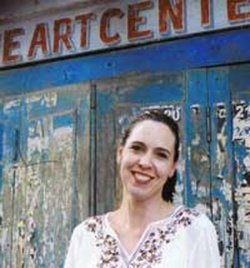Cathleen Cummings
ASSISTANT PROFESSOR OF ART HISTORY:
Areas of specialization: Art of India/South Asia, and the Himalayas.
Cathleen Cummings is a specialist in South Asian art, particularly in the areas of Hindu temple architecture and Indian miniature painting. She received her doctorate in art history from The Ohio State University, specializing in the art of South Asia, with minors in Islamic and Himalayan Buddhist art. Her dissertation, which she is now revising for a book, analyzed the iconography of the eighth-century Virupaksha Temple at Pattadakal, in Karnataka, India, exploring issues of royal and female patronage, the development of Hindu kingship and its rituals, and certain Shaivite religious practices. She has also published on Himalayan Buddhist art, particularly in the context of the catalogue for the exhibition The Circle of Bliss: Buddhist Meditational Art.
She is currently editing a volume for Cambridge University Press on the architecture of Hinduism, which is part of CUP's new series, Encyclopedia of Religious Architecture of the World, and is writing a volume for Scarecrow Press on South Asian art to be published as part of their series, Historical Dictionaries of Art and Literature. She is also in the early stages of an expansive project to identify, describe, and analyze the tradition of painting and illustrated manuscript production under the Marathas, arguably the most prominent and important community in India's Deccan region from the 17th through the early 19th centuries. This represents the first major art historical investigation of the tradition of Maratha painting.
In 2008 Dr. Cummings received a two-year Mellon Postdoctoral Fellowship in South Asian Art and Architecture at Wellesley College in Boston. She will be on leave from the University of Alabama at Birmingham through Spring of 2010.
